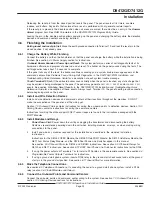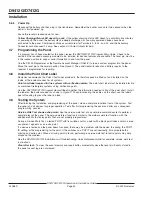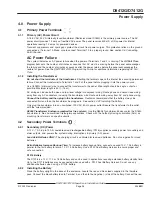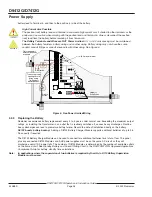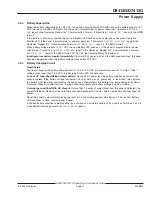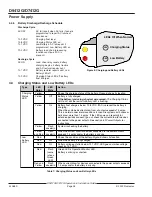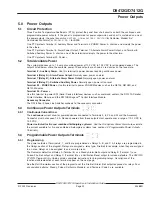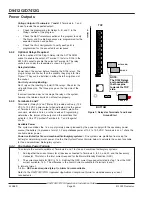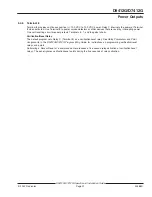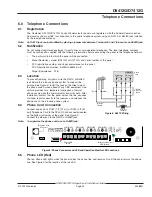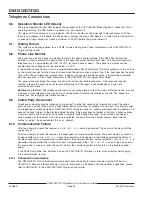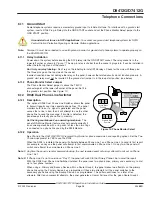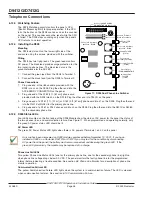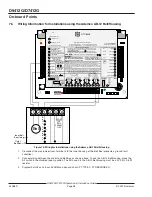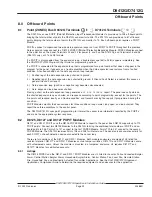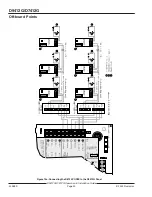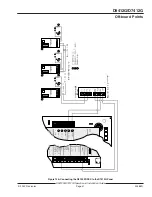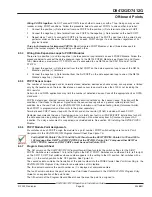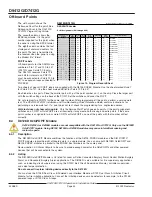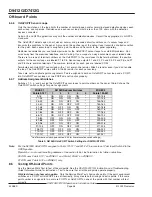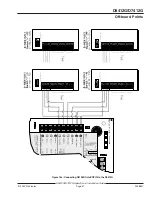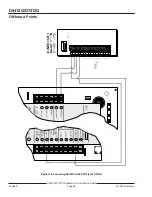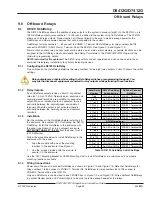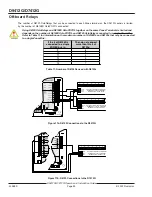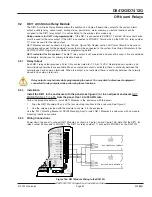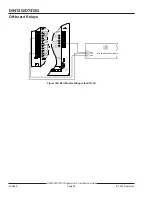
D9412G/D7412G Operation & Installation Guide
© 2002 Radionics
Page 37
43488D
D9412G/D7412G
On-board Points
7.0
On-board Points
7.1
Description Terminals
The panel provides eight on-board points. Each point functions independently and does not interfere with the
operation of the others. The panel monitors the sensor loops for normal, shorted, or open conditions between an
input terminal (11, 13, 14, 16, 17, 19, 20, or 22) and any of the point common terminals (12, 15, 18, and 21).
Programming for the point determines how the panel responds to those conditions. See the
D9412G/D7412G
Program Entry Guide for point programming options. The panel also monitors the sensor loops for ground fault
conditions if S4 is latched (ground fault detect enabled).
7.2
Point Sensor Loops
When wiring the on-board points (see
Figure 12), install a 1 k
Ω
resistor at the far end of the sensor loop to provide
a reference for supervision. Dry-contact sensing devices can be connected in series (normally-closed) and/or in
parallel (normally-open) to any of these loops.
The number of normally-open and/or normally-closed detection devices each sensor loop can supervise is limited
only by the resistance on the loop. The total resistance for wire length and contacts, minus the end-of-line resistor,
must not exceed 100 ohms.
7.3
Point Parameters
The condition of on-board points 1 to 8 can be determined by measuring the voltage across the point input
terminal and one of the common terminals. The sensor loops must be connected and the 1 k
Ω
end of line resistor
in place.
Open Loop
=
Greater than 3.7 VDC, but less than 5.0 VDC.
Normal Loop
=
Greater than 2.0 VDC, but less than 3.0 VDC.
Shorted Loop
=
Greater than 0.0 VDC, but less than 1.3 VDC.
7.4
Point Response Time
The panel scans both on-board and off-board point sensor loops every 300 milliseconds. The
Debounce Count
program item in the
Point Assignment section determines point response time by setting the number of scans that
a point must be faulted before the panel initiates an alarm.
The debounce count can range from 2 to 15. Therefore point response time ranges from 600 milliseconds to 4.5
seconds. The Radionics default for Debounce Count is 2.
Increasing debounce may cause missed alarms: If you increase the Debounce Count, detection devices
may go into alarm and reset without exceeding the point response time.
Radionics recommends a debounce count of 2 for all points except for
Interior Follower points, which should be
programmed as a 3. In addition to this, door points that are connected to a D9210B Access Control Interface
Module should be programmed with a debounce of 4.
Common
100 Ohms maximum
Common
Point Input
Terminal
Point Input
Terminal
Common
Point Input
Terminal
Radionics Model
D105F or D105BL
(UL Listed Burglar
Applications)
End-Of-Line
Resistor
1 k
Ω
Brown
Red
Black
Combination: Normally-Open Contacts and Normally-Closed Contacts (NONC)
Normally-Open Contacts (NOC)
Normally-Closed Contacts (NCC)
Figure 12: On-board Point Sensor Loop Wiring

